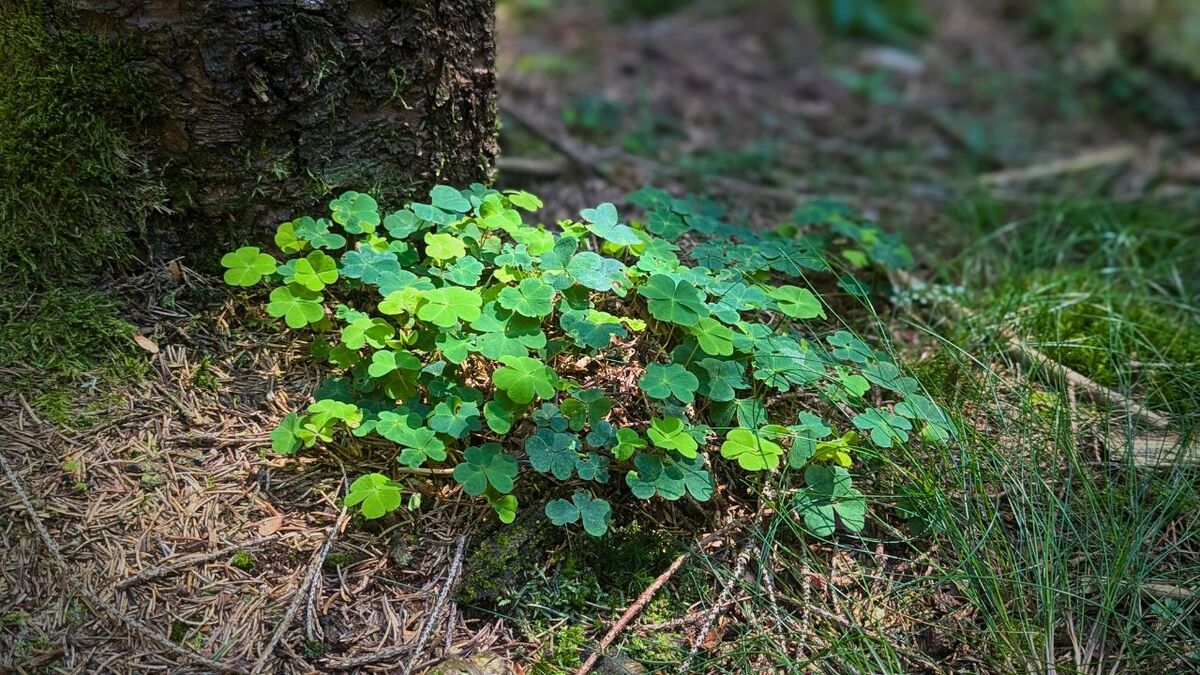
Finding, collecting, and using wood sorrel – the complete guide
👉 The key facts from this guide
- Wood sorrel is an edible wild plant with various uses
- The plant is easy to identify and can be found in many forests
- Wood sorrel has a high nutritional value and is valued in folk medicine
- There are different species of sorrel with similar properties
- Sustainable foraging is important for the preservation of the species
As a child, I discovered a small plant in the woods near my parents' house. It had three heart-shaped leaves and delicate white flowers.
I picked a leaf and took it to my grandparents. They said: You can try it, Martin!
Later I learned that it was wood sorrel. This plant has fascinated me ever since.
In this guide, you will learn how to identify and collect wood sorrel. We will also explore its uses in cooking and herbal medicine. This guide is useful for both beginners and experienced individuals.
Let's now discover the secrets of this fascinating plant.
Wood Sorrel: A Unique Plant with Three Heart-Shaped Leaves and White Flowers
This small perennial plant is a jewel of the forest floor vegetation. Its leaves and delicate flowers uniquely enrich our forests.
The 3 most important features of wood sorrel: Its leaves, flowers, and roots
The leaves of the wood sorrel are unique. They consist of three heart-shaped leaflets that sit on long stems (sometimes four, but you have to be very lucky for that!).
In spring, white or pale pink flowers appear, giving elegance to the forest floor. The wood sorrel grows in dense cushions and rarely reaches a height of over 10 cm.
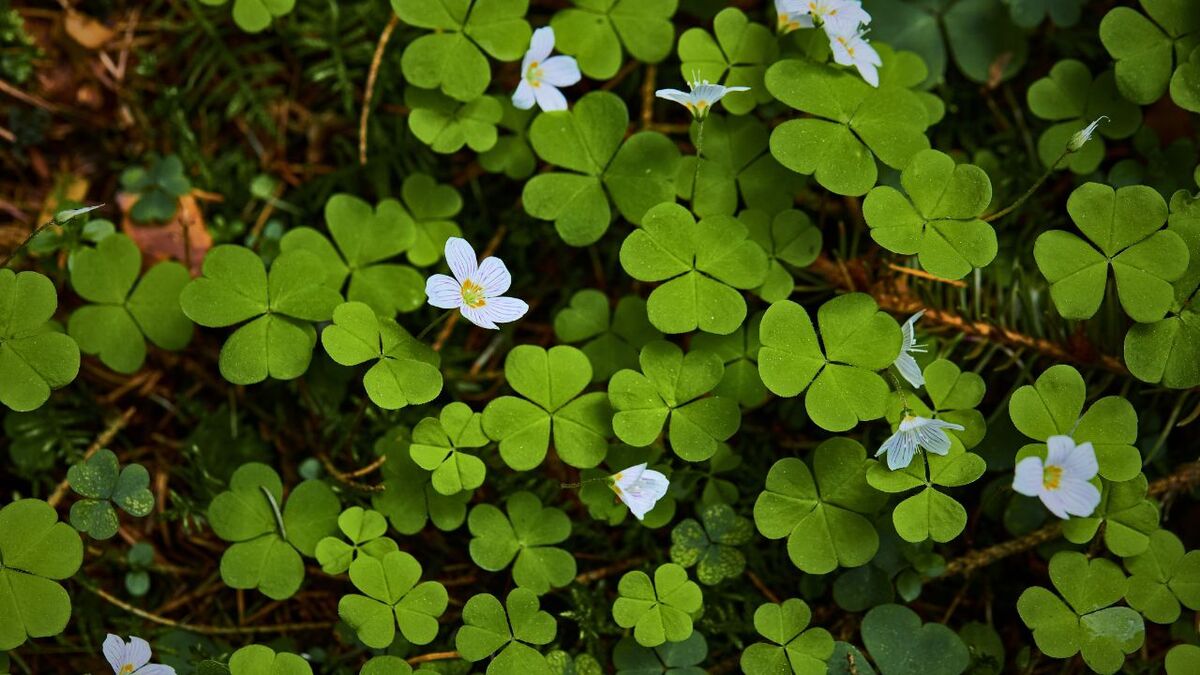
Wood Sorrel Location: it loves shady, moist forests with nutrient-rich soils
The wood sorrel loves shady, moist places in coniferous, deciduous, and mixed forests. It is often found under beeches, oaks, or spruces. Its habitat extends across Europe, parts of Asia, and North America.
Below in the image you see wood sorrel, which I found in the Thuringian Forest:
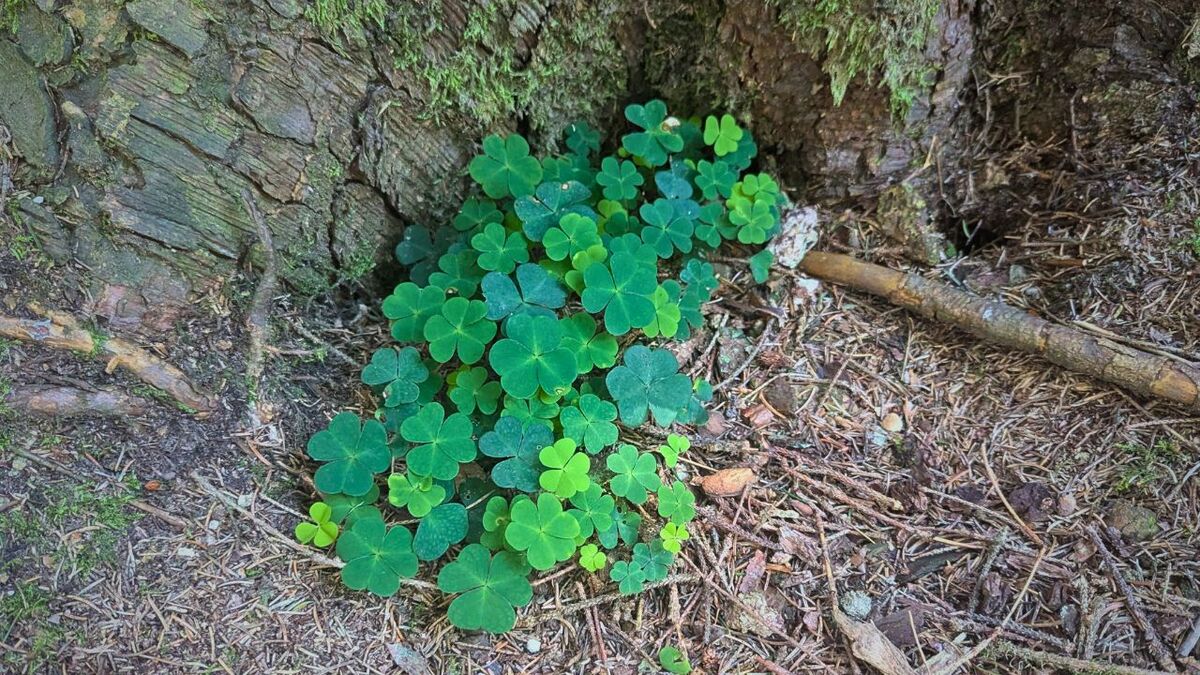
How to distinguish wood sorrel from other sorrel species
One can easily confuse the forest sorrel with other native sorrel species. The horn-fruited sorrel and the upright sorrel have yellow flowers. The leaf shape and flower color are crucial for differentiation.
| Type | Flower Color | Growth Height | Location |
|---|---|---|---|
| Wood Sorrel | White or pale pink | Up to 10 cm | Shady forest floors |
| Horned Sorrel | Yellow | Up to 30 cm | Gardens, roadside edges |
| Upright Sorrel | Yellow | Up to 40 cm | Meadows, field edges |
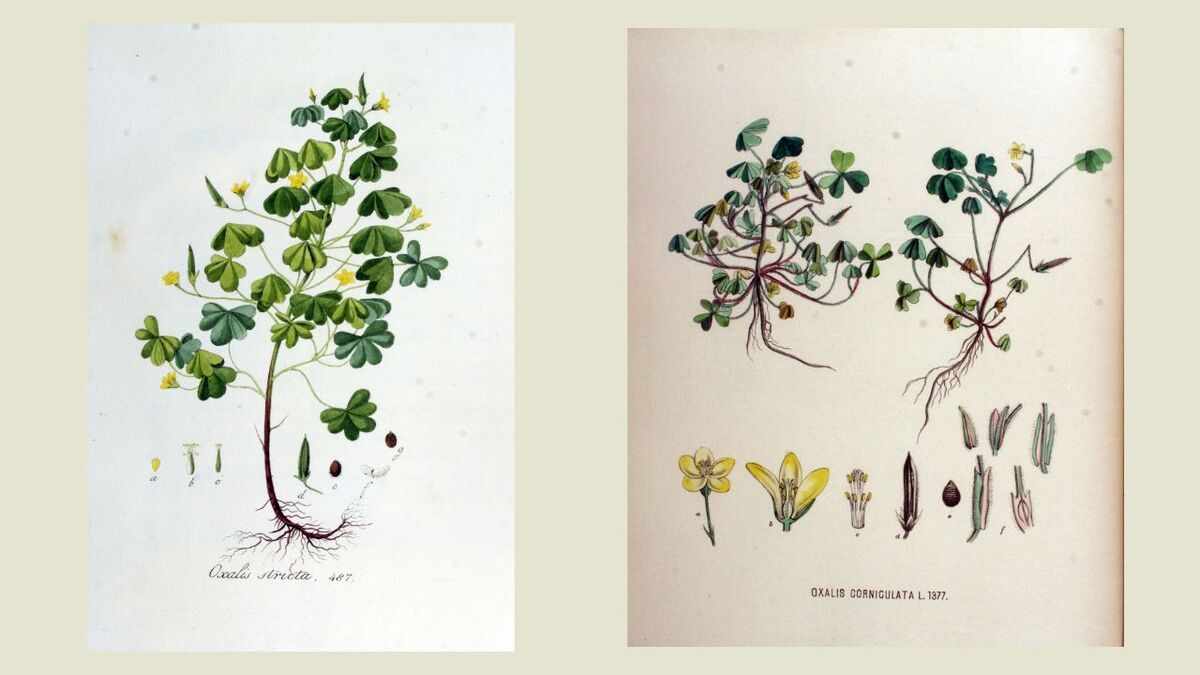
But don't worry! The Horned Sorrel as well as the Upright Sorrel are also edible, and a mix-up is therefore harmless.
The 5 Easiest Ways to Safely Identify Wood Sorrel (Oxalis acetosella)
When walking in the forest, I often notice the delicate wood sorrel. It is easy to recognize when you know what to look for. The Oxalis acetosella, as it is called botanically, has great characteristic features that are easy to identify.
The leaves of the wood sorrel are its trademark. They typically look like little hearts and grow directly from the rhizome of the plant.
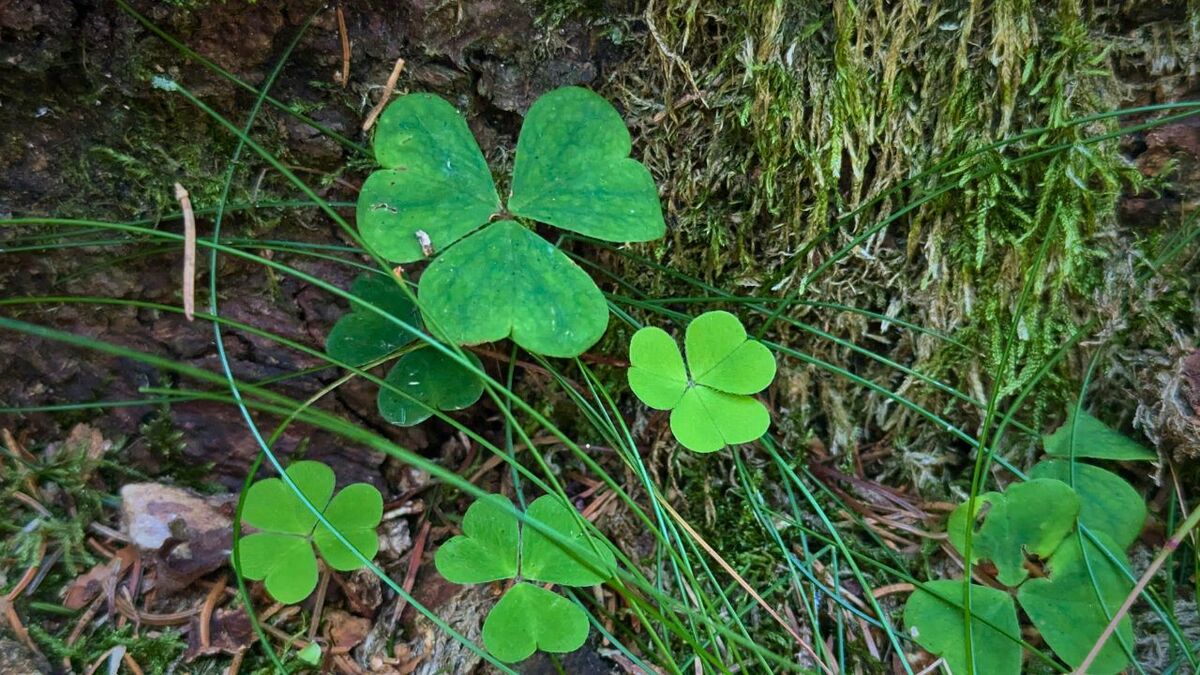
Each leaf consists of three heart-shaped leaflets. In the dark or during rain, the leaves fold together - a fascinating spectacle!
In spring, the wood sorrel shows its delicate flowers. They are white or slightly pink and have five petals. I often see purple stripes on the flowers that act like little signposts for insects.
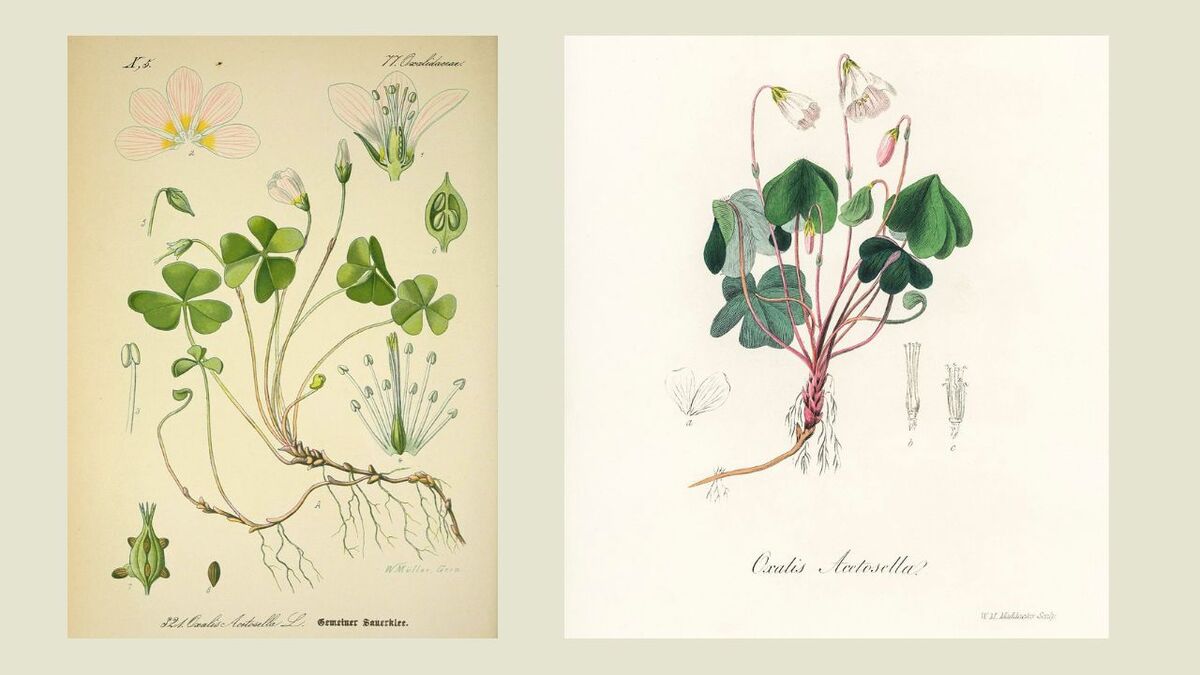
Here are the facts:
- Leaves: trifoliate, heart-shaped, divided into three
- Flowers: White to pink, with five petals
- Growth height: 5–15 cm
- Location: Shady, moist forest floors: deciduous forests, coniferous forests, mixed forests
- Harvest months: Feb-Aug, Oct-Nov
- Other names: Hare clover, wood sorrel, book clover, cuckoo salad
- Toxicity: non-toxic
- Warnings: Since wood sorrel contains oxalic acid, you should only consume small amounts daily
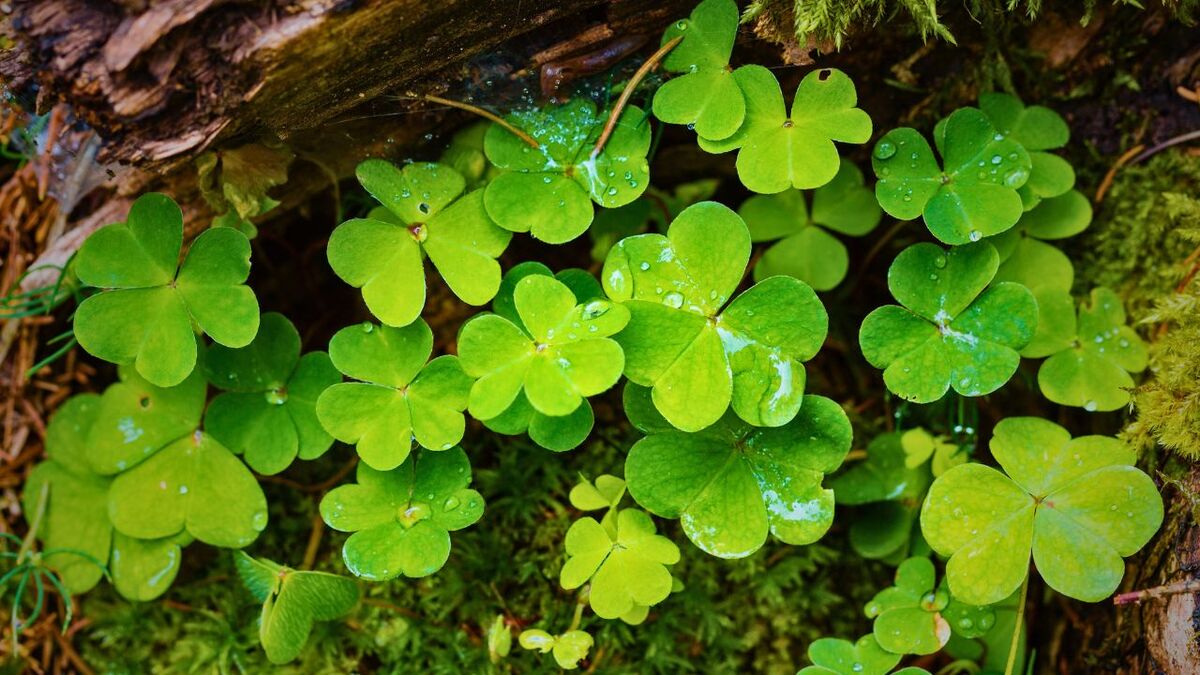
To avoid confusion with sorrel weeds, I pay special attention to the location.
The true wood sorrel, a perennial plant, usually grows in shady, moist forests. Its relatives, such as the horn-fruited sorrel, prefer gardens or meadows.
| Feature | Wood Sorrel | Horned Sorrel |
|---|---|---|
| Flower Color | White to pink | Yellow |
| Habitat | Shady forests | Gardens, meadows |
| Petiole | Hairless | Hairy |
With these tips, I find it easy to identify wood sorrel confidently. Its unique features make it a fascinating discovery on any forest walk.
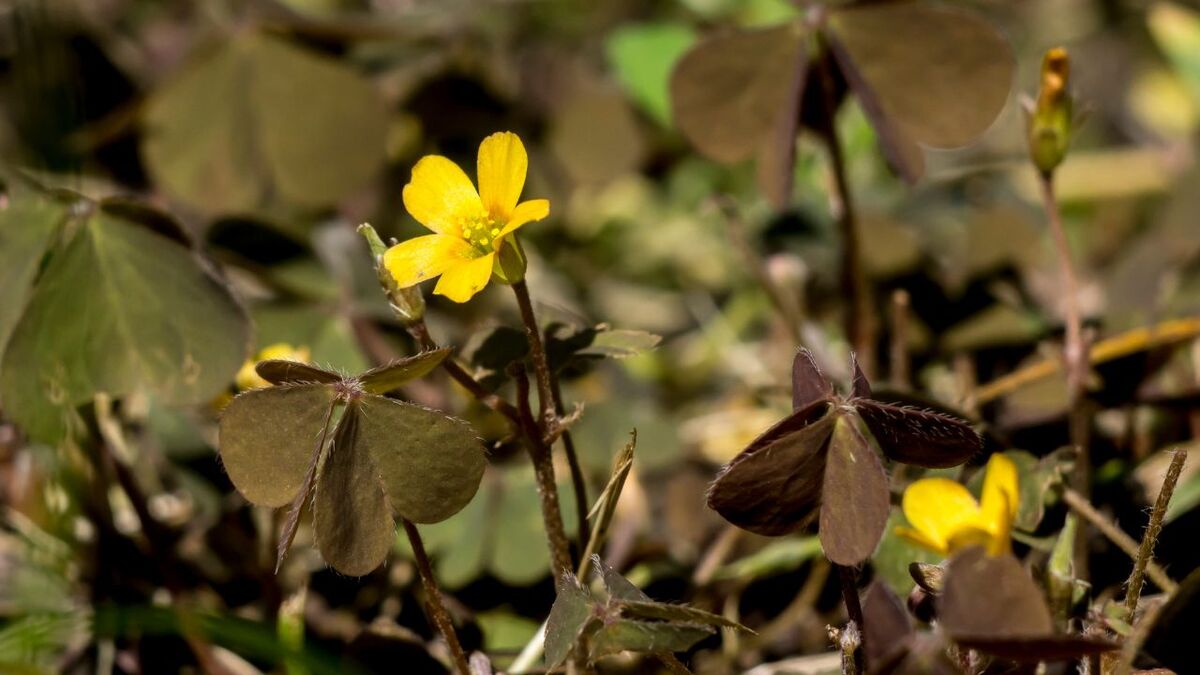
Wood sorrel is often found in deciduous forests with beech and oak trees, especially in the Alps and in the low mountain ranges
When collecting wood sorrel, it is important to know the best locations. I share my knowledge about the ideal conditions for this delicate forest floor plant.
Typical Forest Soils and Microclimate
Wood sorrel loves shady and moist places in deciduous and coniferous forests. The best locations are on humus-rich, slightly acidic soils. The microclimate should be cool and moist, typical for densely vegetated forest floors.

You can find wood sorrel from spring to autumn. In April and May, it blooms with delicate white flowers. Especially the young leaves in spring and early summer are ideal for foraging because they are tender and taste delicious.
How to collect wood sorrel sustainably: A guide to responsible use
When collecting wood sorrel, it is important to act sustainably. I never harvest more than a third of a plant. This allows it to regenerate. When searching, I look for large populations and avoid small groups.
I use a sharp pair of scissors or a knife for the gentle harvest. This way, I carefully cut off the leaves without damaging the roots. I place the leaves loosely in my collection basket to avoid bruising.
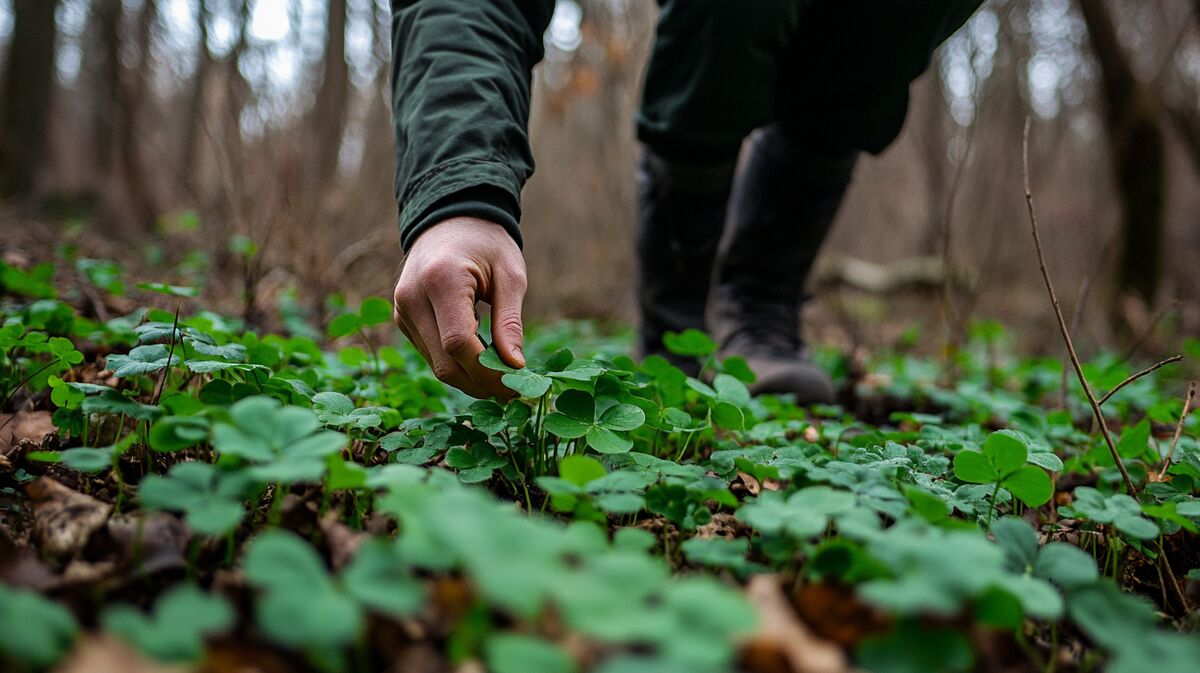
Legally, collecting in nature reserves is prohibited to protect the trees and plants there. In other forests, I may only harvest for personal use. A handful per person is usually sufficient.
Collect with respect for nature. Take only what you really need and leave enough for animals and other collectors.
At home, I wash the wood sorrel thoroughly and dry it gently. Then I place it in an airtight container in the refrigerator. This keeps it fresh for a few days. For longer shelf life, I freeze the leaves in portions.
| Collection Method | Advantages | Disadvantages |
|---|---|---|
| Picking individual leaves | Gentle on the plant | Time-consuming |
| Digging up whole plants | Quick collection | Damages the stock |
| Cutting with scissors | Efficient and gentle | Tool required |
With these tips, I can responsibly collect wood sorrel. This way, I can enjoy the pleasure of this delicious wild plant for a long time.
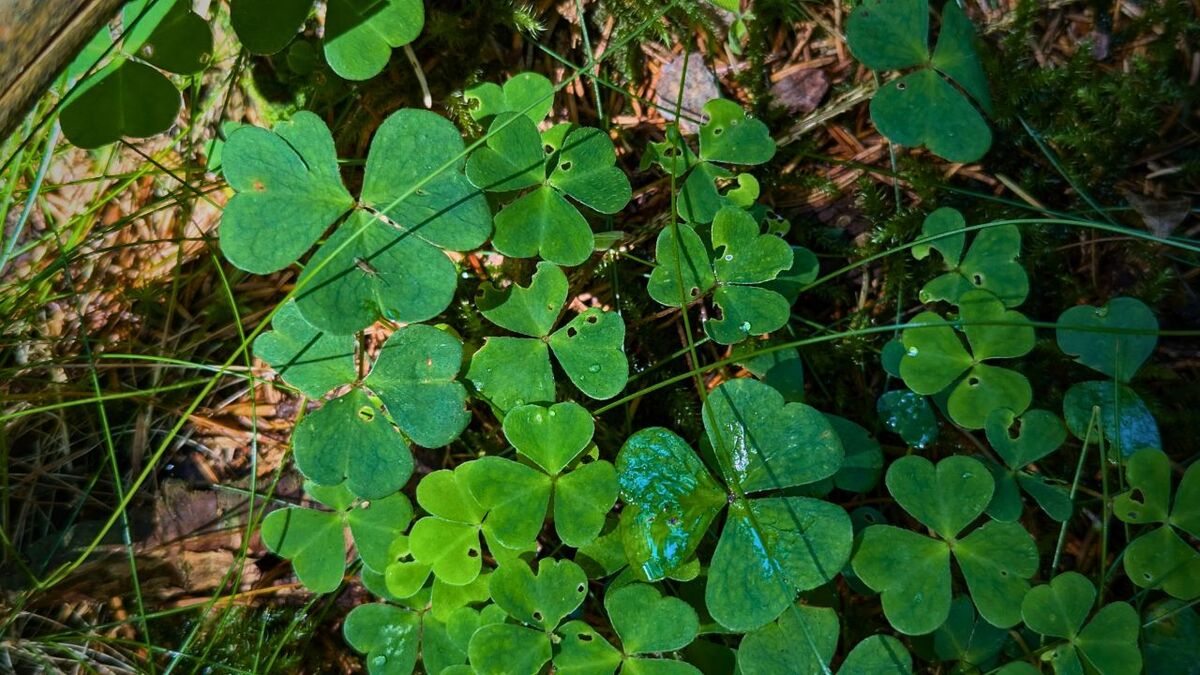
Wood Sorrel: A plant that is rich in vitamin C, iron, and calcium and is valued in folk medicine
Wood sorrel is an often underestimated plant. It offers many advantages. As a wilderness mentor, I find it as versatile as the nettle, the chickweed, the daisy, or the dandelion, and I want to tell you why.
Vitamins and Minerals
Wood sorrel is full of vitamin C. It also contains important minerals like potassium and magnesium. In the past, wood sorrel was even occasionally given for scurvy because it contains a significant amount of vitamin C.
Medical Applications in Folk Medicine
In folk medicine, wood sorrel often helps with digestive problems. A tea made from the leaves can relieve nausea. Here is the list of what wood sorrel can help with:
- Flatulence
- Fever
- Skin problems
- Liver weakness
- Spring fatigue
- Kidney problems
- Menstrual pain
Its properties are:
- soothing
- cooling
- diuretic
- fever-reducing
- blood-purifying

Possible Risks and Side Effects
Wood sorrel is great, but one should be careful. It contains oxalic acid, which is harmful in large quantities. I advise not to eat more than a handful per day.
Wood sorrel is a delicious and nutrient-rich addition to the diet, but as with all wild plants, moderation is key!
Wood Sorrel in the Kitchen: Various Recipes and Uses
Wood sorrel is a versatile edible plant that adds fresh accents in the kitchen. I enjoy experimenting with this spicy herb. This creates new taste experiences.
A popular dish is the wood sorrel salad. I mix the leaves with arugula, lamb's lettuce, and roasted walnuts. Then I come with a dressing of olive oil, lemon juice, and honey.
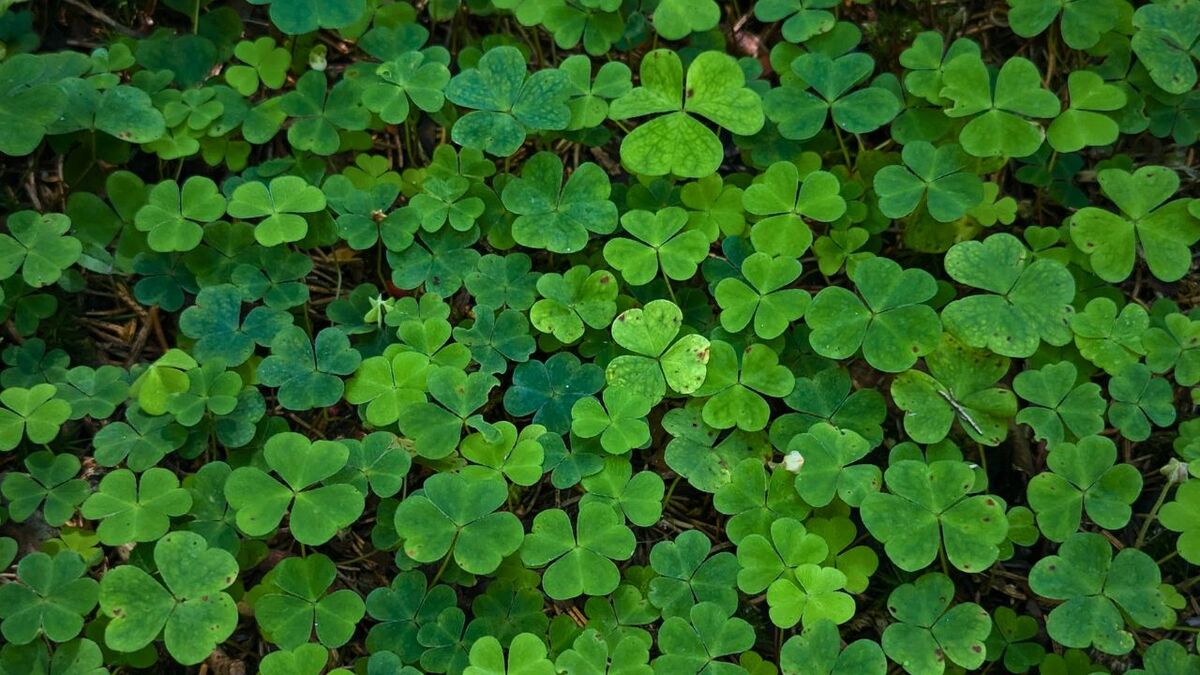
A refreshing smoothie is created when I puree wood sorrel with spinach, banana, and apple. The drink is rich in vitamins and slightly tangy.
My secret tip is wood sorrel pesto. I mix the leaves with pine nuts, Parmesan, garlic, and olive oil. It tastes great with pasta or as a spread on bread.
| Dish | Ingredients | Preparation Time |
|---|---|---|
| Wood Sorrel Salad | Wood sorrel, arugula, lamb's lettuce, walnuts | 10 minutes |
| Green Smoothie | Wood sorrel, some spinach, banana, apple | 5 minutes |
| Wood Sorrel Pesto | Wood sorrel, pine nuts, Parmesan, garlic, olive oil | 15 minutes |
To preserve wood sorrel, I sometimes freeze it. This way, I can enjoy it in winter and use it in dishes like a smoothie or a pesto.
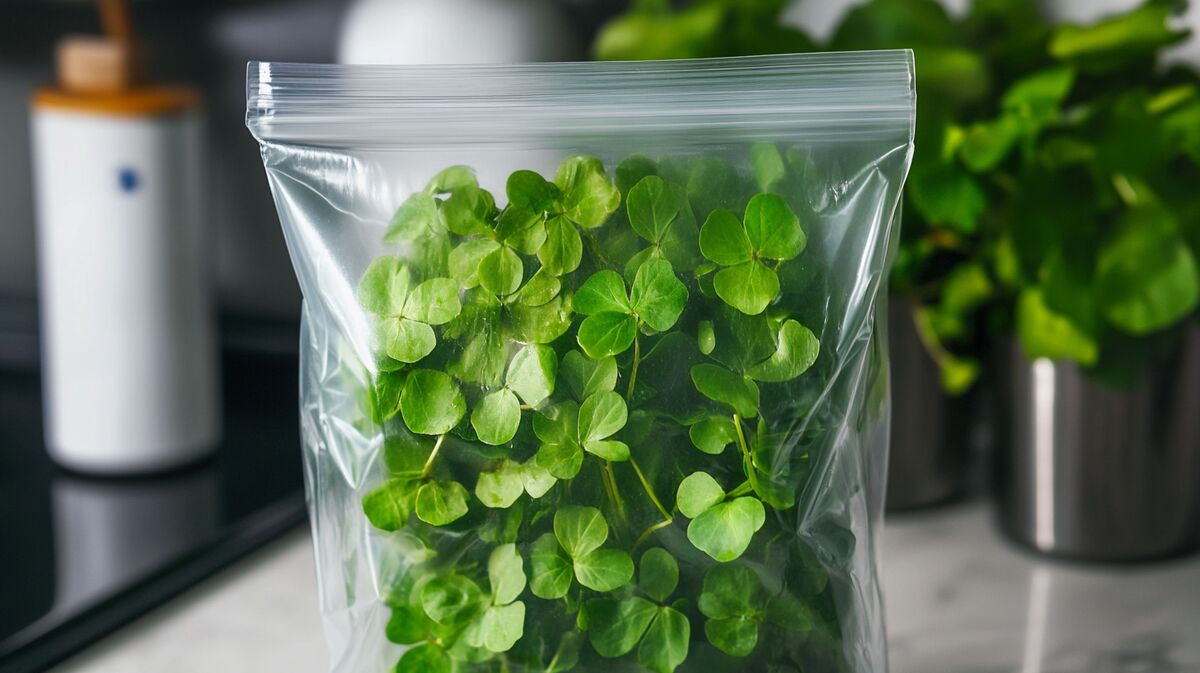
Wood Sorrel in the Survival Kitchen: Tips for Outdoor Enthusiasts
As a survival enthusiast, I know how important edible plants are in the wild. Wood sorrel is a versatile plant that can support you in emergencies.
Emergency Food in the Wilderness
Wood sorrel is a reliable food source for outdoor adventures. Its leaves are rich in vitamin C and can be eaten raw. In survival situations, it helps to satisfy hunger and provide essential nutrients.

It is hopefully clear that most plants contain little carbohydrates and proteins (there are exceptions, such as the seeds of the nettle) and that they do not provide a complete meal.
Reading Tip!
👉 If you would like to discover more edible plants, nuts, fruits, and trees, be sure to read my guide "Edible Plants: This Emergency Food You Can Find in the Forest (List + Pictures)". There, I show in a large list what you can eat directly from nature in the summer.
👉 And if you are out and about during the winter months, I recommend this guide: Food Foraging in Winter: Over 41 Edible Plants, Nuts, Roots, and More for Emergency Food in Cold Weather
Preparation without cooking utensils
The simplest way to enjoy wood sorrel is to chew the fresh leaves directly. You can also chop the leaves and mix them with water to make a paste. Another option is to dry the leaves in the sun to take them as a supply.
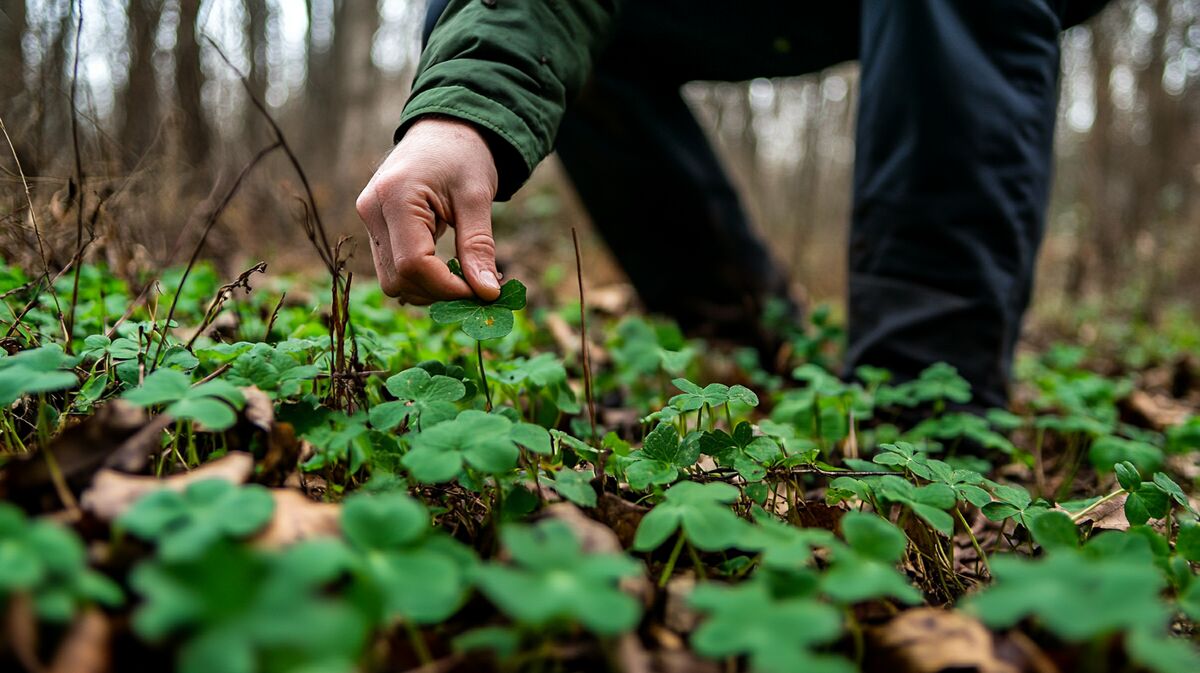
Combination possibilities with other wild plants
Wood sorrel combines well with other edible plants. Here is an overview of some combinations:
| Wild Plant | Combination | Nutritional Value |
|---|---|---|
| Nettle | Salad | Higher in protein due to the nettle |
| Wild Garlic | Spice Paste | Higher in vitamins due to the wild garlic |
| Dandelion | Wild Herb Mix | Higher in fiber due to the dandelion |
These combinations not only enhance the flavor but also the nutritional value of your survival meals. With creativity and knowledge of edible plants, you can prepare diverse and nutritious dishes even in the wilderness.
Wood Sorrel: A Fascinating Plant with Diverse Uses and Health Benefits
The wood sorrel, also known as Oxalis acetosella, is an exciting and delicious plant. I love to collect it in the woods.
It grows in our forests and is edible. Its refreshing taste makes it ideal for many dishes.
My children can also recognize it extremely easily and there is no risk of confusion with poisonous plants.
When foraging, it is important to be attentive. We should only take small to normal amounts and protect the roots. This way, the plant remains healthy and continues to thrive.
I hope this guide has inspired you to explore wood sorrel. It is not only useful in the kitchen but also in herbal medicine. Use this plant with care and enjoy its diversity.
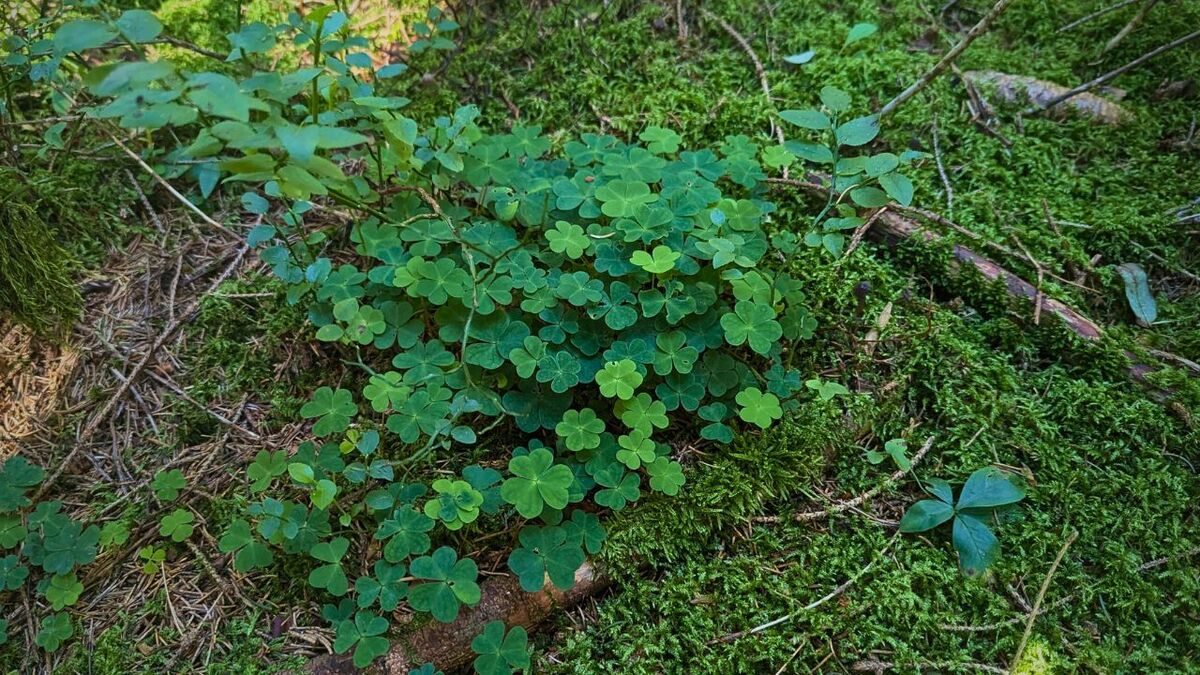
FAQ: Wood Sorrel: A Summary of Key Facts and Insights
How can I reliably identify wood sorrel?
Wood sorrel has clover-like leaves and white flowers. It grows low and bushy on the forest floor. Its taste is slightly sour.
Where can I find wood sorrel in nature?
It loves shady, moist forests with nutrient-rich soils. It often grows alongside mosses and ferns.
How do I sustainably harvest wood sorrel?
Only take moderate amounts. Do not completely uproot the plant. Preferably collect the outer leaves and leave the inner shoots intact. Moreover, be aware of local plant protection regulations.
What health benefits does wood sorrel have?
It is rich in vitamin C, iron, and calcium. In folk medicine, it helps with scurvy and wound healing. However, too much can upset the stomach.
How can I use wood sorrel in the kitchen?
The fresh leaves are great for salads, smoothies, pesto, or as a seasoning. They have a slightly sour and refreshing taste. Dried or preserved, they can also be stored for longer periods.
Are there alternatives to wood sorrel in wilderness cooking?
Yes, horned sorrel and upright sorrel are also edible. They resemble wood sorrel.


Author of the guide
Martin Gebhardt
Hey, I'm Martin. On my blog, you will learn the basics and numerous details about living in the wild. I think survival, bushcraft and the good life in nature are the keys to happiness. Find me here on Instagram or on YouTube. You can find more about my mission on the About Me page.
Was this guide helpful?
20 people found this guide helpful.
5.00 out of 5 points (20 Ratings)
Comments (0)
This post may contain affiliate links. So if you click on the links and make a purchase, I will receive a small commission at no additional cost to you. Click here, to learn more about it.


